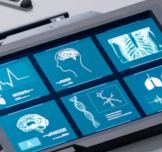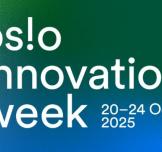Shaking hands with a friend who’s halfway across the world, not that far away!

Imagine you’re checking your phone, you see pictures, texts, hear some cool new sounds, watch an inspiring YouTube video, AND besides all that, you can use your phone to play with Lego pieces that are actually thousands of kilometers away!
It’s one more gift the internet is blessing us with, being able to touch through the medium of the internet!
Tim Berners-lee launched the world wide web 20 years ago, a virtually infinite network of computers that later evolved into Mobile Internet, connecting billions of smartphones and laptops, and facilitating the exchange of voice, data and multimedia content at any time.
Now the Internet of Things (IoT) is taking over the world, connecting trillions of objects and devices. Yet again, we find ourselves on the verge of a huge evolutionary leap for the internet, called the Tactile Internet.
In perhaps 20 years, we could have a wireless network that would send and receive vast amounts of data in less than 1/1000 of a second. This speed matches the speed humans react to touching something hot for example, hence the name ‘tactile’. This means we could wirelessly control real and virtual objects anywhere in the world from a mobile device and get the sensation that we were controlling something right in front of us.
Why is it such a big deal?
We’re talking about a mega-scale man-to-machine and machine to machine interaction that is going to revolutionize many applications; think robotics, telepresence, virtual reality (VR), augmented reality (AR), healthcare, education and even gaming!
To help you imagine, Mark Zuckerberg recently posted a video showcasing Oculus VR’s Toybox. It allows you to pick up objects, build things and play games like ping pong with your friend halfway across the world as if he/she were with you. The Tactile Internet will make applications like this, something normal we use everyday.
For example, we can create virtual classrooms where we use virtual reality technology to interact in class. Forget sitting in the back of a lecture hall all detached and sleepy, you will be wandering the streets of ancient Rome and feel like you’re touching the monuments.
Similarly, we could learn new skills like flying or surfing, from life-like simulations in our own living rooms. We could also chat with someone halfway across the world and still feel they’re sitting on our couch, possibly even shake their hands!. Doctors too will be able to examine, diagnose and operate on patients through the internet, wherever they are, using “telerobotic technologies”.
How fast is fast?
For the Tactile Internet to deliver what it promises, it needs to overcome the challenge of today’s internet. Our data are not that secure, they take a long time in their journey from the source to the destination, facing multiple system outages. The Tactile Internet, however, will have an extremely low delay time, plus high availability, reliability, and security.
With the Tactile Internet, you can move a finger and create a response in less than 0.001 seconds, which is about 100 times faster than what today’s fastest network connections can provide.
Does it really need to be that fast?
Well yes, during our interaction with real life surroundings, we react to everything very fast. We actually expect any device to react as fast as we do or close to that. Otherwise, we feel something is off or not working well.
In a phone call for example, unless the other side’s voice reaches you in less than 0.1 seconds, you’ll feel the call is lagging, whereas a streaming video starts to annoy you if it takes more than 0.01 seconds between frames.
The big challenge comes when you move a finger or limb to make an auditory or visual response, like moving a 3D object with a joystick in a virtual-reality experience. Here, the time-lag between your movement and the expected effect must be less than 0.001 seconds, or else you may feel some disorientation that’s like motion sickness.
Not only will the Tactile Internet need to have ultra-fast reaction times, the digital infrastructure will have to adapt to such requirements as well. We’ll need a data network 100 times faster than the current 4G network—and it will probably take another decade or so for telecoms companies to start investing seriously in a new network. However, Ericsson and King’s College London have already announced that they will collaborate on research into the next generation of wireless technology (5G), that could be fast enough to create a network of instant-reaction internet devices, mimicking the experience of real life.
Once the obstacles have been overcome and solutions have been found, the Tactile Internet will enable multiple new applications, products, and services. This is a huge ocean for startups and university research teams to dive into. They could forecast the upcoming change and use it to explore a variety of services and drive new levels of innovation in our society.
What do you think local entrepreneurs can do to make the most of this impending wave before it even rises?


































































EgyptInnovate site is not responsible for the content of the comments